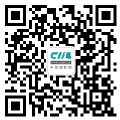At Apple's autumn 2025 new product launch event, the iPhone 17 series showcased a remarkable leap in charging speed, boasting the ability to reach a 50% charge in just 20 minutes. This enhancement is primarily credited to the inclusion of a 40W dynamic power adapter, a first for the iPhone 17 lineup. The crux of its innovation lies in the Adjustable Voltage Supply (AVS) protocol. This protocol enables finer voltage level adjustments and, when coupled with built-in temperature sensors, dynamically adjusts output power in real-time to avert battery overheating. Test data reveals that the adapter can initially deliver a peak power close to 60W. However, due to thermal constraints, it automatically reduces to a stable 40W output after 18 minutes. Performance varies among models: the iPhone 17 Pro Max, with its larger form factor and graphene heat dissipation layer, achieves a measured peak power of 38W, sustaining high-power output for 10 minutes, reaching 49% in 20 minutes, and fully charging in just 1 hour and 50 minutes. The iPhone 17 Pro maintains a steady charging power of 26-28W in daily use, reaching 52% in 20 minutes and fully charging in 1 hour and 38 minutes. The standard iPhone 17 version typically maintains a measured power of 26-27W, reaching 50% in 20 minutes and taking 1 hour and 48 minutes for a full charge. The iPhone 17 Air, Apple's thinnest model yet, adopts a more cautious charging strategy, requiring 30 minutes to reach 50%. Apple's official 40W adapter is priced at 329 yuan (approximately $45), sparking some debate. However, tests show that third-party PD chargers offer excellent compatibility. For instance, when using a 65W gallium nitride charger to power the iPhone 17 Pro Max, the power remains stable within the 35-40W range throughout, with the full charging time extending by only 3 minutes compared to the original adapter. Nevertheless, Apple restricts third-party accessories through its MFi certification program. Non-certified chargers may trigger power limitations and fail to unlock the full potential of the AVS protocol's fine-tuning capabilities. Compared to the 200W fast-charging solutions prevalent in the Android camp, the iPhone 17 series' 40W approach may appear conservative. However, through dynamic power management, tailored model designs, and end-to-end optimization, Apple delivers a safer and more intelligent charging experience for its users.

-
 C114 Communication Network
C114 Communication Network -
 Communication Home
Communication Home


